Table of Contents
ToggleIn a world where shopping carts are more digital than ever, optimizing smart shopping campaigns isn’t just a nice-to-have—it’s essential. Imagine trying to navigate a maze blindfolded; that’s what running a campaign without proper optimization feels like. With the right strategies, marketers can transform their campaigns from “meh” to “wow” faster than you can say “conversion rate.”
Smart shopping campaigns offer a treasure trove of opportunities, but without optimization, they can quickly turn into a money pit. It’s like throwing spaghetti at the wall and hoping something sticks. By fine-tuning targeting, adjusting bids, and analyzing performance, marketers can ensure their ads don’t just reach eyeballs but also convert clicks into loyal customers. Let’s dive into the art and science of making smart shopping campaigns work harder and smarter for you.
Understanding Smart Shopping Campaigns
Smart shopping campaigns leverage automation and machine learning to simplify digital advertising. These campaigns integrate various Google platforms, such as Search, Display, and YouTube, enabling broad reach with less manual management.
What Are Smart Shopping Campaigns?
Smart shopping campaigns combine standard shopping and display remarketing strategies. They utilize product data feeds to showcase products across Google’s vast network. These campaigns automatically create ads, target potential customers, and adjust bids in real-time to maximize performance. Google employs machine learning to optimize placements and bidding. Advertisers benefit from increased conversions due to streamlined processes and reduced manual oversight.
Benefits of Smart Shopping Campaigns
Efficiency ranks among the significant advantages of smart shopping campaigns. Automated bidding and ad placements save time for advertisers, allowing focus on strategy. Increased visibility occurs through multiple channels, enhancing brand exposure and driving traffic to online stores. With real-time adjustments, these campaigns optimize budgets effectively, minimizing wasted ad spend. Additionally, improved targeting helps reach the right audience, fostering conversions and boosting return on investment.
Key Components of Campaign Optimization
Optimizing a smart shopping campaign involves several key strategies that enhance effectiveness and drive results. Understanding these components can significantly improve campaign performance.
Setting Up Your Campaign
Establishing a solid foundation is essential for any smart shopping campaign. Start by selecting specific conversion goals, aligning them with overall business objectives. Choose a well-organized product feed, as accurate product information increases ad relevance. Define budgets transparently; setting a daily budget helps in managing expenditures effectively. Incorporate high-quality images and compelling product descriptions to attract potential customers. Monitor initial performance data closely; this allows for timely adjustments to ensure campaign success.
Targeting and Audience Selection
Effective targeting maximizes a campaign’s reach and engagement rates. Begin by utilizing remarketing lists to engage past visitors familiar with products. Focus on demographic targeting to reach specific age groups, locations, and interests. Analyze data from previous campaigns; insights guide ongoing improvements in audience selection. Leverage Google’s machine learning features for automated targeting, which identifies potential customers who are likely to convert. Select relevant keywords that align with product offerings, enhancing visibility across search results.
Strategies for Effective Optimization
Effective optimization of smart shopping campaigns hinges on several strategic components that drive better performance and results.
Bidding Strategies
Utilizing data-driven bidding strategies enhances visibility and maximizes return on investment. Automated bidding options like Target CPA or Target ROAS allow for real-time adjustments based on campaign performance. Marketers often analyze historical data to set competitive bids, ensuring the budget allocation aligns with conversion goals. Regularly monitoring these strategies helps identify trends, enabling quick adaptation to market fluctuations. Allocating more budget to top-performing products boosts overall effectiveness and can significantly amplify conversions.
Ad Creative and Product Feed
High-quality ad creative and well-structured product feeds play crucial roles in campaign success. Clear images and compelling descriptions capture potential customers’ attention and encourage clicks. Optimizing product titles with relevant keywords increases discoverability across search results. Accurate information in the product feed, such as pricing and availability, maintains customer trust. Regular updates to the product feed ensure campaigns reflect the current inventory and promotional offers. Ad creative should also align with seasonal trends to attract shoppers effectively.
Analyzing Performance Metrics
Marketers must assess performance metrics to optimize smart shopping campaigns effectively. This process helps identify strengths and weaknesses in strategy execution.
Key Performance Indicators (KPIs)
KPIs serve as measurable values that demonstrate campaign effectiveness. Metrics like conversion rate, click-through rate, and return on ad spend provide insights into performance. Conversion rate measures the percentage of visitors completing a purchase. Click-through rate indicates the effectiveness of ads in attracting attention. Return on ad spend calculates revenue generated for every dollar spent on advertising. Monitoring these KPIs allows marketers to make data-driven adjustments, focusing on areas requiring improvement. Regular analysis of these indicators enhances campaign effectiveness.
Tools for Tracking and Analysis
Numerous tools exist for tracking and analyzing smart shopping campaigns. Google Analytics offers robust features for monitoring website traffic and user behavior. Google Ads provides built-in reporting capabilities that highlight ad performance metrics. Third-party platforms like SEMrush and Ahrefs also deliver insights into keyword performance and competitor analysis. These tools simplify data interpretation, ensuring marketers understand campaign impact. Leveraging these resources fosters informed decisions, improving future strategies and outcomes.
Best Practices for Ongoing Optimization
Ongoing optimization is critical for maintaining the effectiveness of smart shopping campaigns. Implementing best practices can ensure consistent improvement and better returns.
Regular Auditing and Adjustments
Conducting regular audits of campaign performance is key to identifying areas for enhancement. Marketers should analyze metrics like conversion rate and return on ad spend at consistent intervals. Adjustments based on these analyses help realign campaigns with evolving goals. Review targeting strategies, bidding approaches, and product feed data during each audit. Ensure that ad creatives remain relevant and engaging by refreshing them periodically. This proactive strategy allows marketers to optimize campaigns based on real-world performance metrics.
Staying Updated with Industry Trends
Keeping abreast of industry trends can significantly influence campaign success. Marketers benefit from monitoring changes in consumer behavior and shifts in digital advertising practices. Following reputable sources such as industry blogs, webinars, and expert insights can provide valuable information. Additionally, understanding algorithms and features introduced by platforms like Google can enhance campaign effectiveness. This active engagement helps marketers adapt strategies timely, ensuring alignment with current market demands. Responding swiftly to these trends allows for better targeting and improved campaign results.
Optimizing smart shopping campaigns is essential for any marketer looking to thrive in the competitive digital landscape. By implementing targeted strategies and leveraging data-driven insights, they can turn potential clicks into loyal customers. Regularly analyzing performance metrics and adjusting tactics ensures campaigns remain effective and aligned with business goals.
Staying informed about industry trends and best practices further enhances their ability to adapt and succeed. With the right approach, smart shopping campaigns can maximize visibility and return on investment, ultimately driving growth and profitability. Embracing these optimization techniques will empower marketers to navigate the complexities of digital advertising with confidence.



